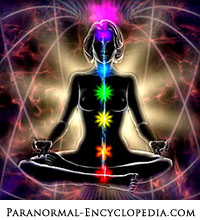Kundalini

The word Kundalini has its origins in Sanskrit language and means "coiling like a snake." The serpent power refers to psycho-spiritual energy, residing in a sleeping body like a serpent at the root of human spine in a triangular bone called the Sacrum. Greeks and Egyptians ascribed extraordinary power to this bone. It is said to be enlivened by supreme forms of yoga, and awakening of this primeval form of energy is regarded as gaining a higher form of knowledge.
Described in great details in Indian Upanishads and Tantric texts, it has also been referred to in doctrines of Tibetan and Chinese studies, in the Bible as the solar principal of man and holy Grail, in the Koran and in works of philosophers such as Plato and Te Ching.
The objective of Kundalini awakening is to arouse cosmogonic energy, facilitate its movement through psychic centers or the charkas and unite it above the crown of head with pure consciousness to attain full liberation of the soul.
It is said that this process creates new pathways in the nervous system resulting in pain, as the body has difficulty handling the sudden release of explosive energy. It may manifest in muscle cramps, intense heat or cold, uncontrolled bodily movements, hyperactivity, digestive problems, emotional outbursts and even paralysis. These symptoms can be controlled by heavier diet and meditation.
Largely an eastern concept, Kundalini was popularized in west by the works of C.W. Leadbeater (1847-1934) from the Theosophical Society and the diagnostic psychologist Carl Jung (1875-1961).
